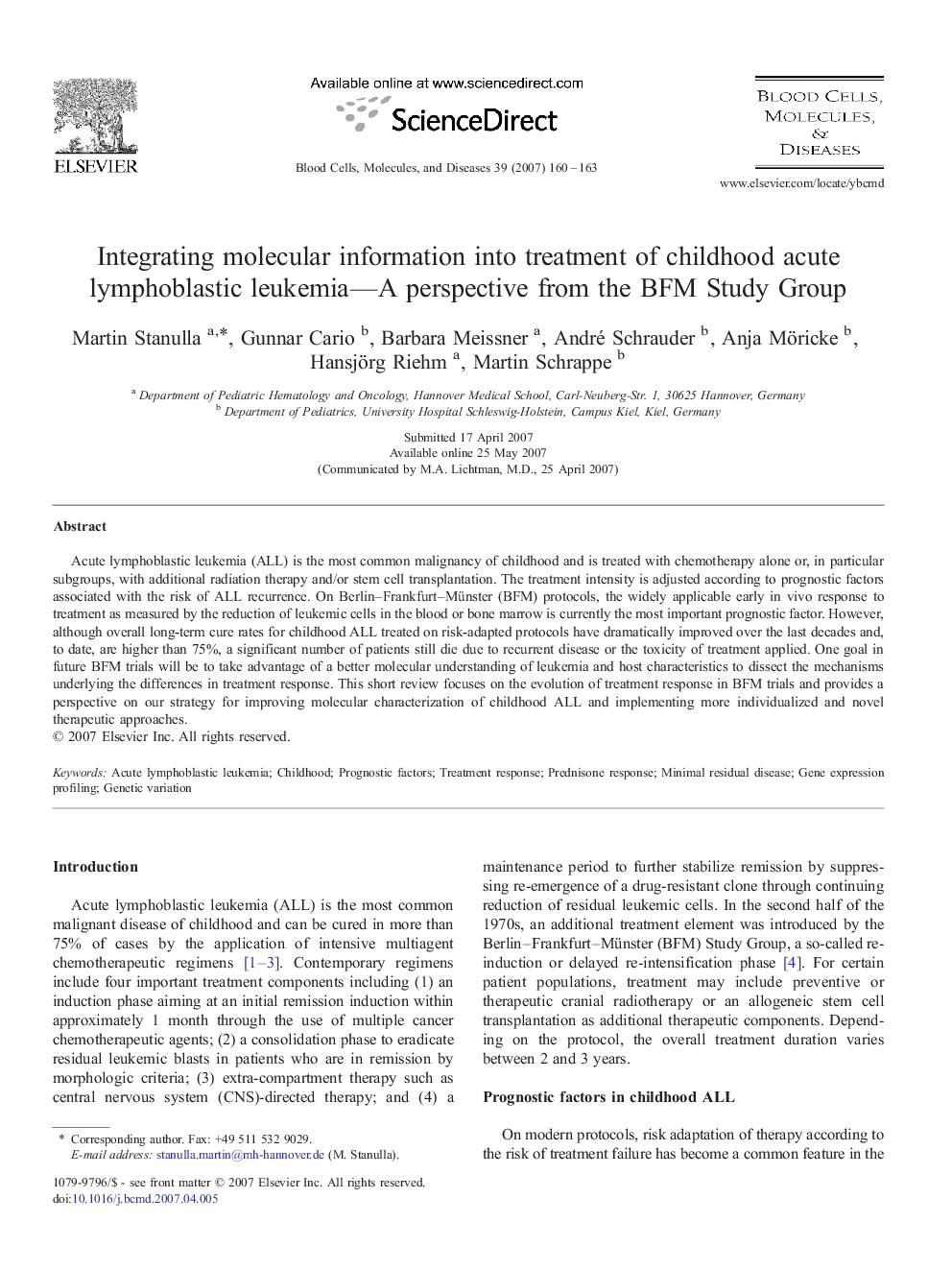| Article ID | Journal | Published Year | Pages | File Type |
|---|---|---|---|---|
| 2828109 | Blood Cells, Molecules, and Diseases | 2007 | 4 Pages |
Acute lymphoblastic leukemia (ALL) is the most common malignancy of childhood and is treated with chemotherapy alone or, in particular subgroups, with additional radiation therapy and/or stem cell transplantation. The treatment intensity is adjusted according to prognostic factors associated with the risk of ALL recurrence. On Berlin–Frankfurt–Münster (BFM) protocols, the widely applicable early in vivo response to treatment as measured by the reduction of leukemic cells in the blood or bone marrow is currently the most important prognostic factor. However, although overall long-term cure rates for childhood ALL treated on risk-adapted protocols have dramatically improved over the last decades and, to date, are higher than 75%, a significant number of patients still die due to recurrent disease or the toxicity of treatment applied. One goal in future BFM trials will be to take advantage of a better molecular understanding of leukemia and host characteristics to dissect the mechanisms underlying the differences in treatment response. This short review focuses on the evolution of treatment response in BFM trials and provides a perspective on our strategy for improving molecular characterization of childhood ALL and implementing more individualized and novel therapeutic approaches.
